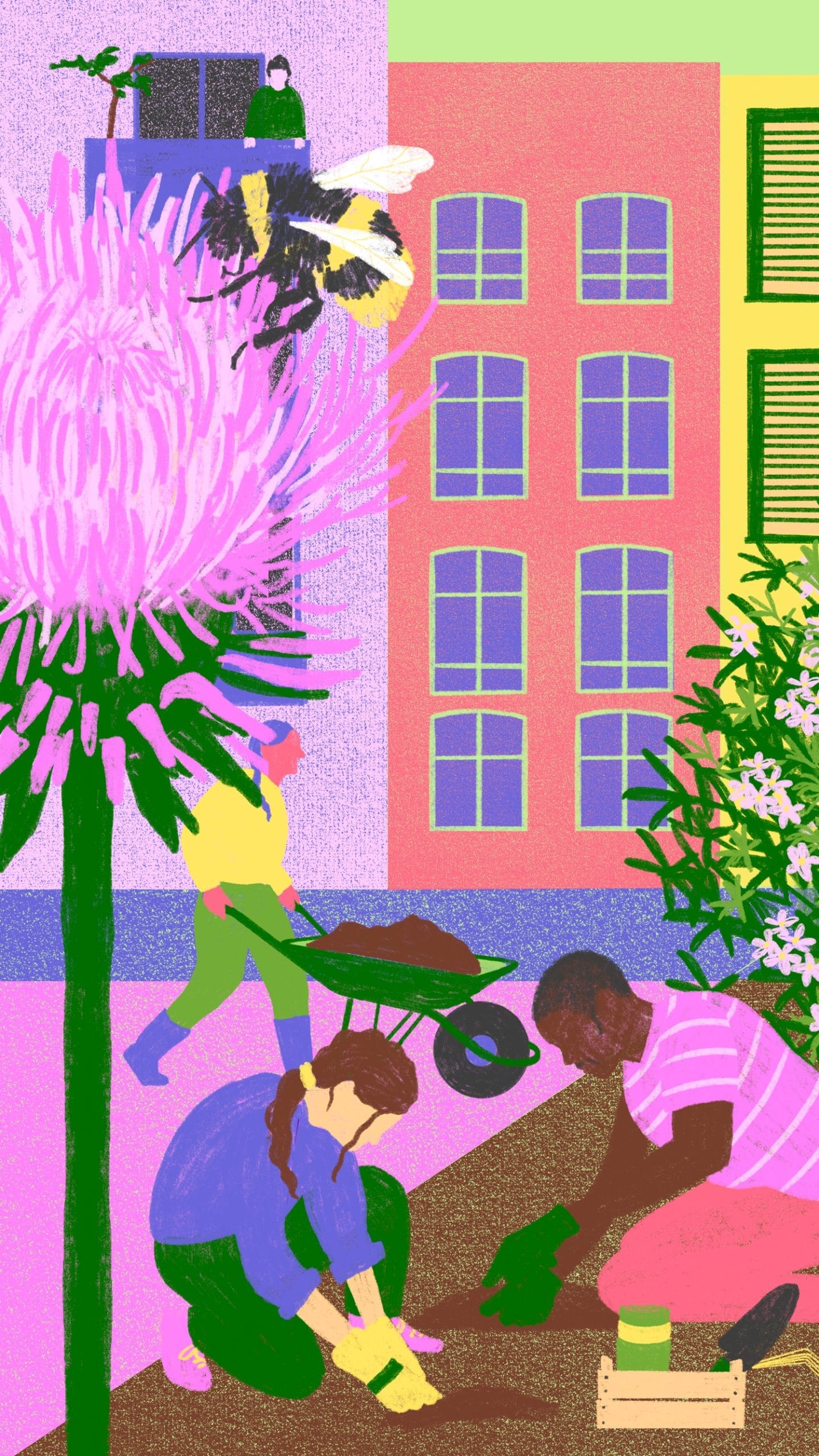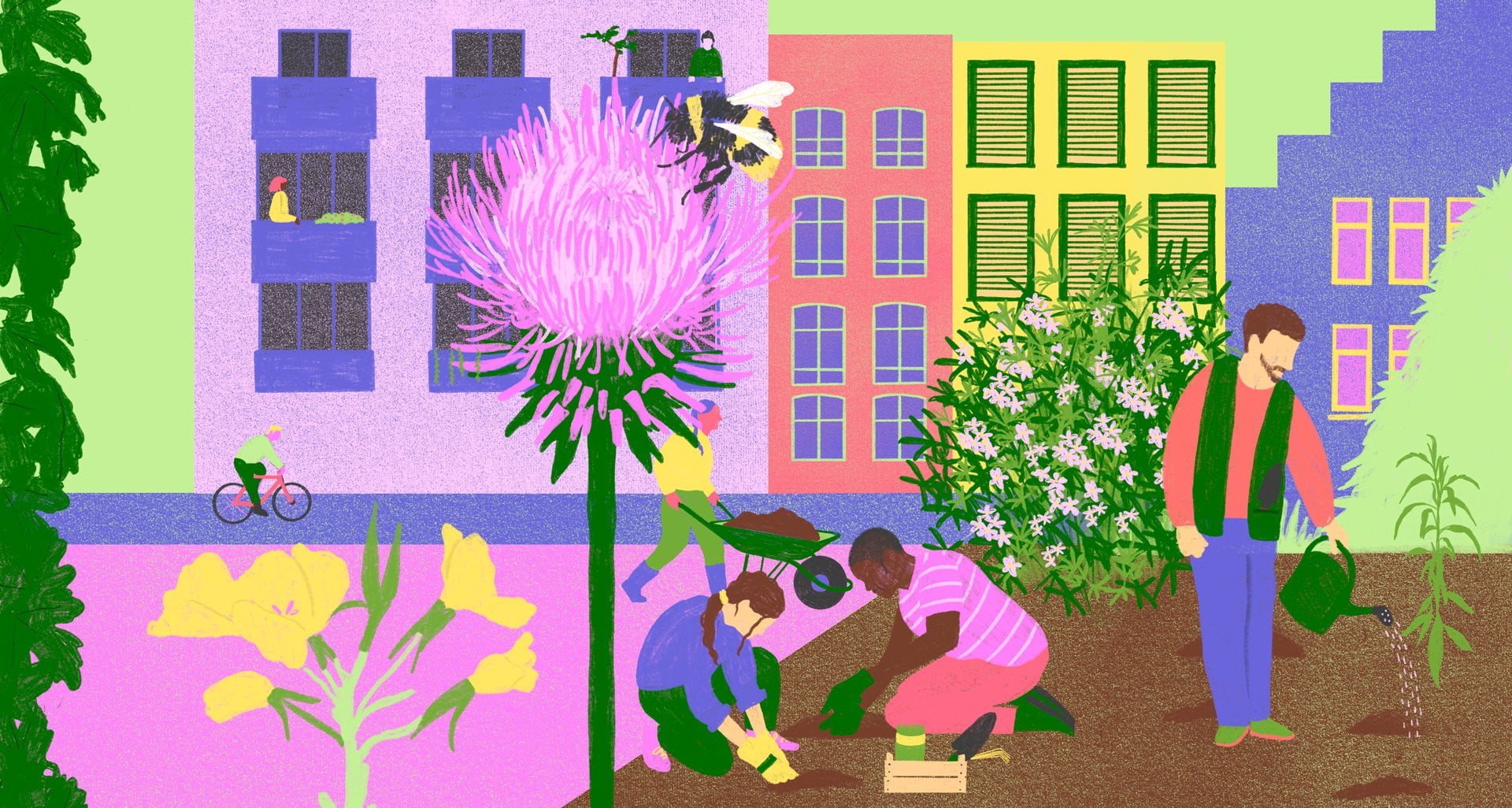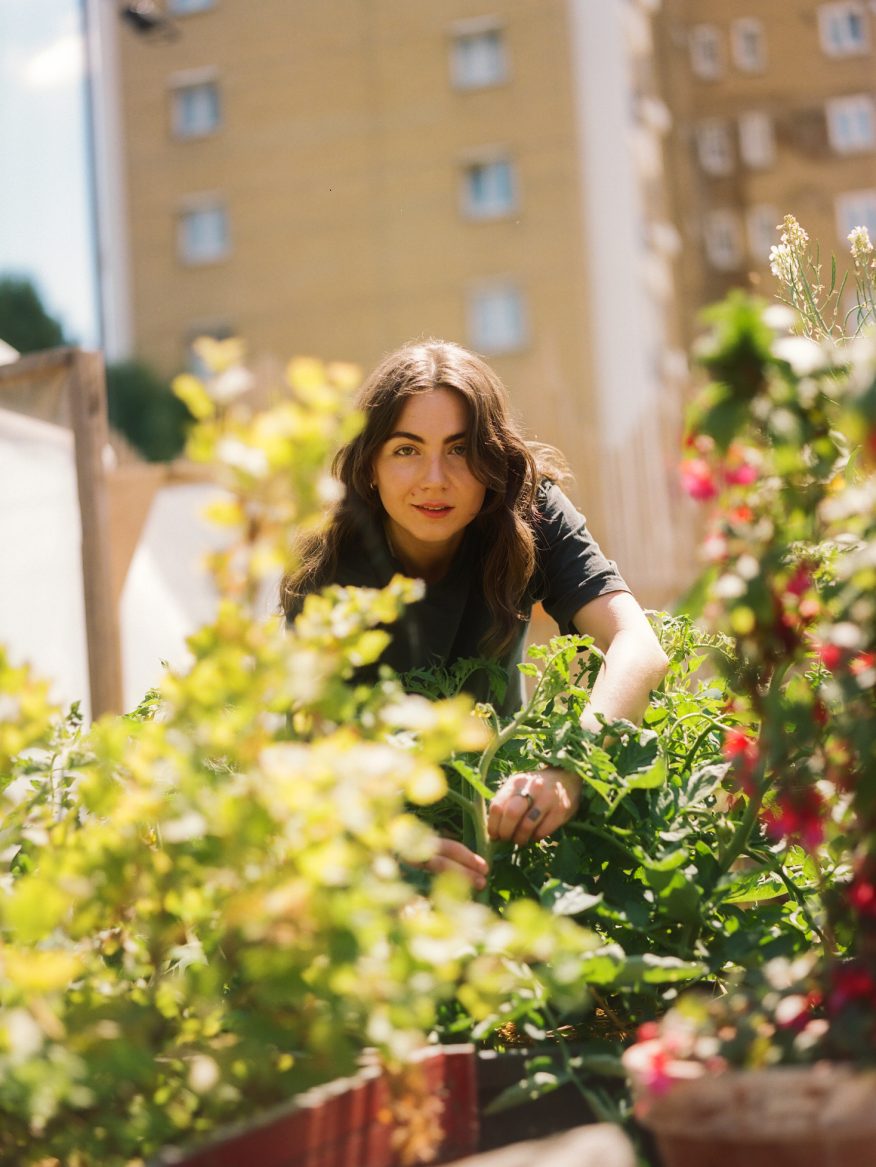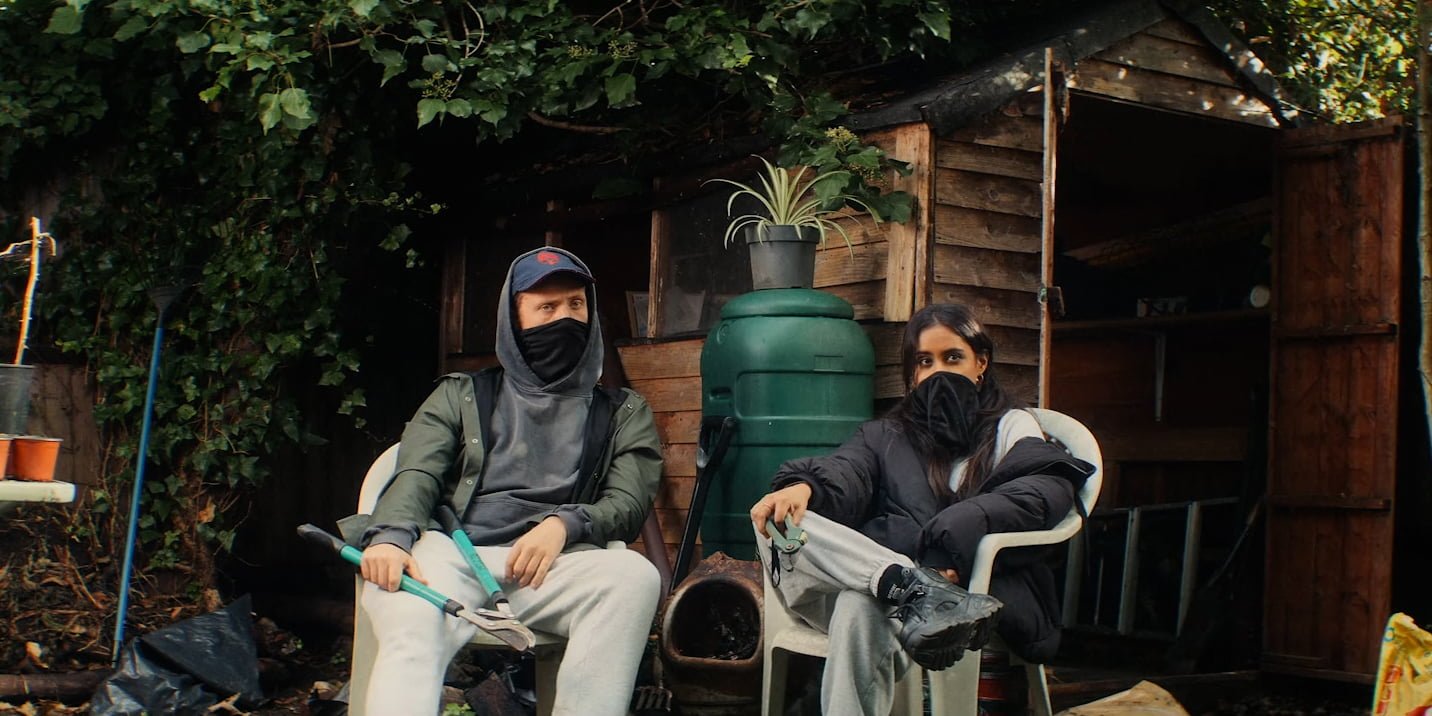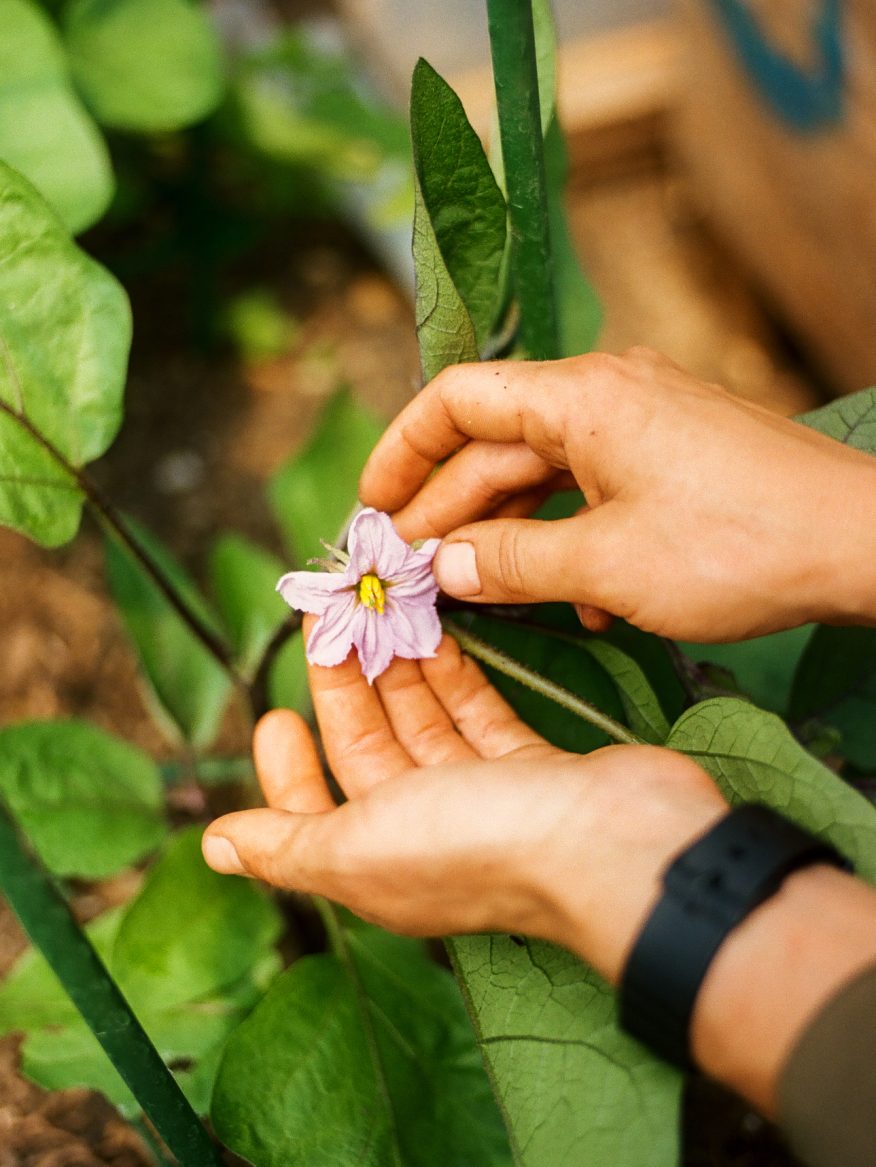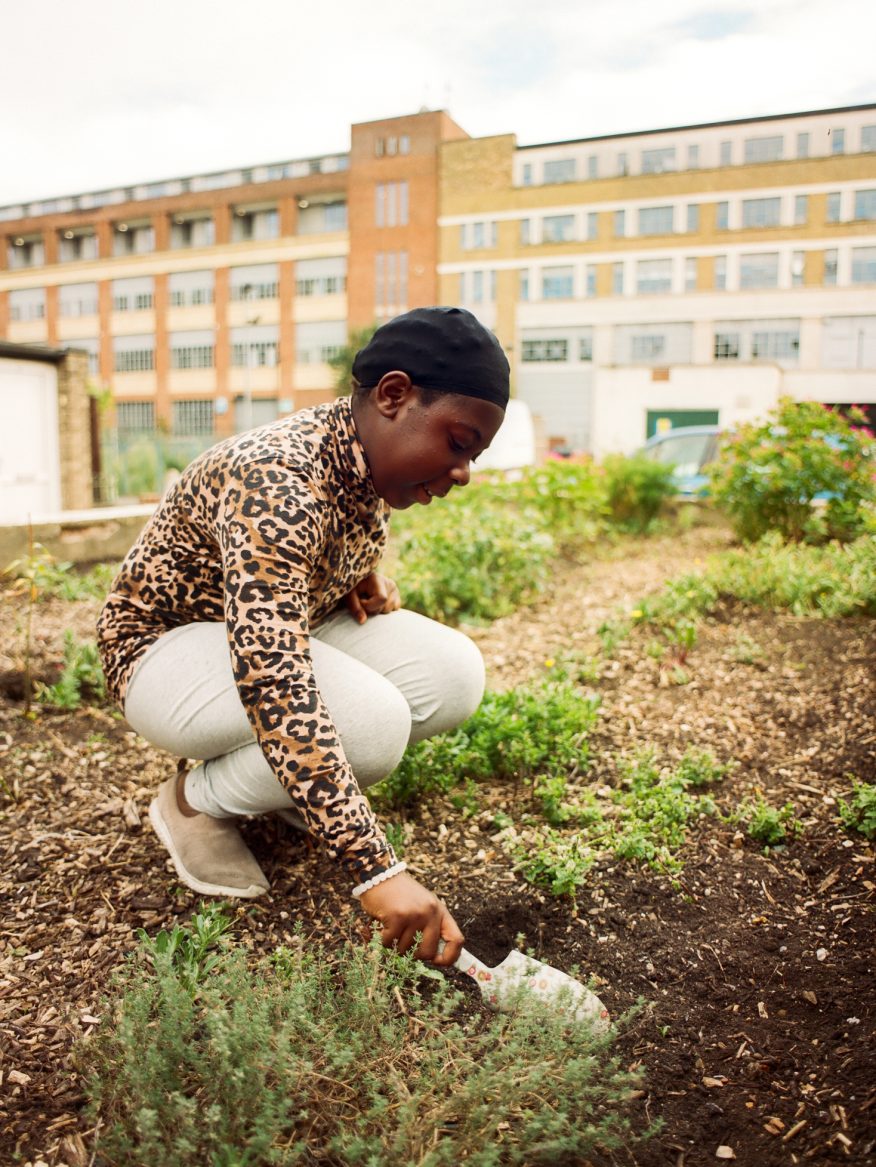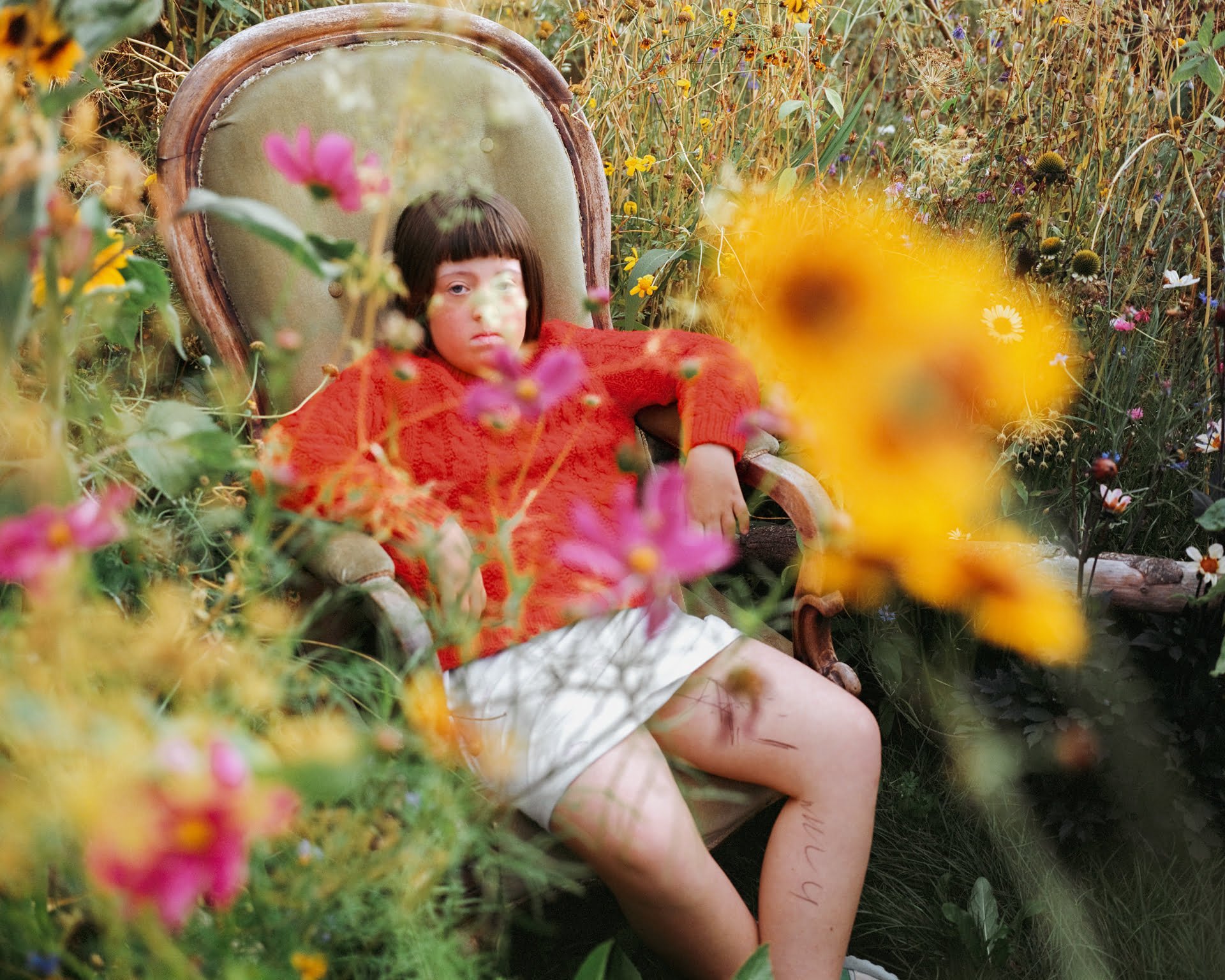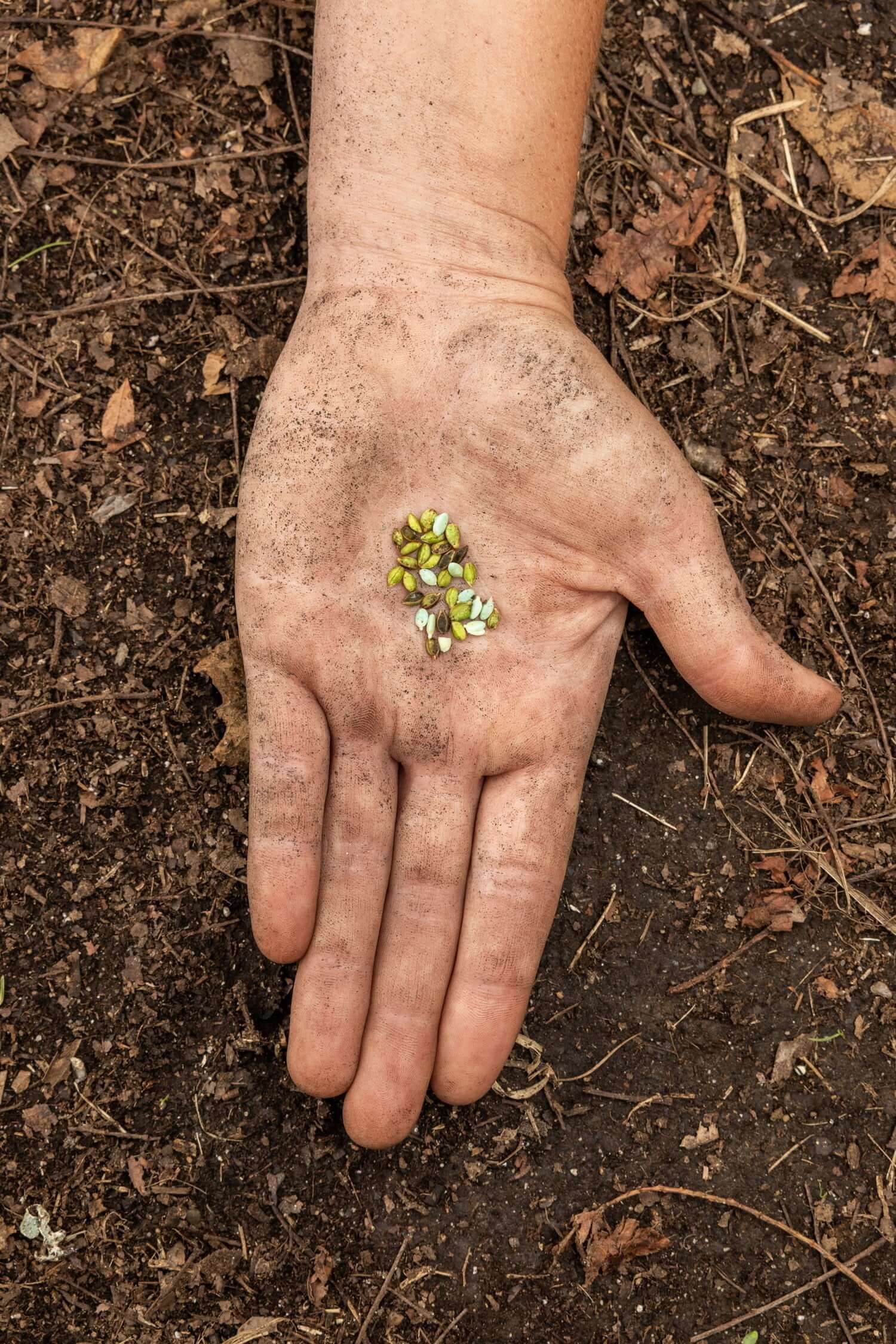What is guerrilla gardening?
Guerrilla gardening is the act of growing plants in your neighborhood’s neglected spaces. Whether that’s scattering native wildflower seeds onto a road verge, planting spring bulbs in a street tree bed, or turning a vacant lot into a community allotment, the aim is to bring nature into urban areas and transform the landscape from barren to bountiful.
Guerrilla gardens can boost biodiversity, create community spaces, produce fresh food, clean polluted air and support mental health, as well as providing beauty and color. The “guerrilla” aspect comes from being truly grassroots: growing from the ground up through community-led action, rather than municipal influence or involvement. In other words, guerrilla gardening is where flower power meets people power.
Rooted in social justice and climate action, this growing movement needs you! You don’t have to be a green-fingered expert to get started. Just follow the guidelines below and soon you’ll be painting the town green.
STEP 1
Know your purpose
The first step in creating a guerrilla garden is to know why you’re doing it. This will set you up for all the decisions that follow.
LOOK INWARD (Your motivations)
Begin by considering your own motivations. What has drawn you to this path? What motivates you to become a guerrilla gardener? Is it a love for people, plants, or the planet? Consider also what you stand to personally gain too. Belonging, hope, pride, purpose, joy? Be honest with yourself; knowing what drives you can keep you going when you run into hurdles.
Exercise
Sit and reflect on what has brought you to this toolkit, and what will carry you through to the end of this incredible journey.
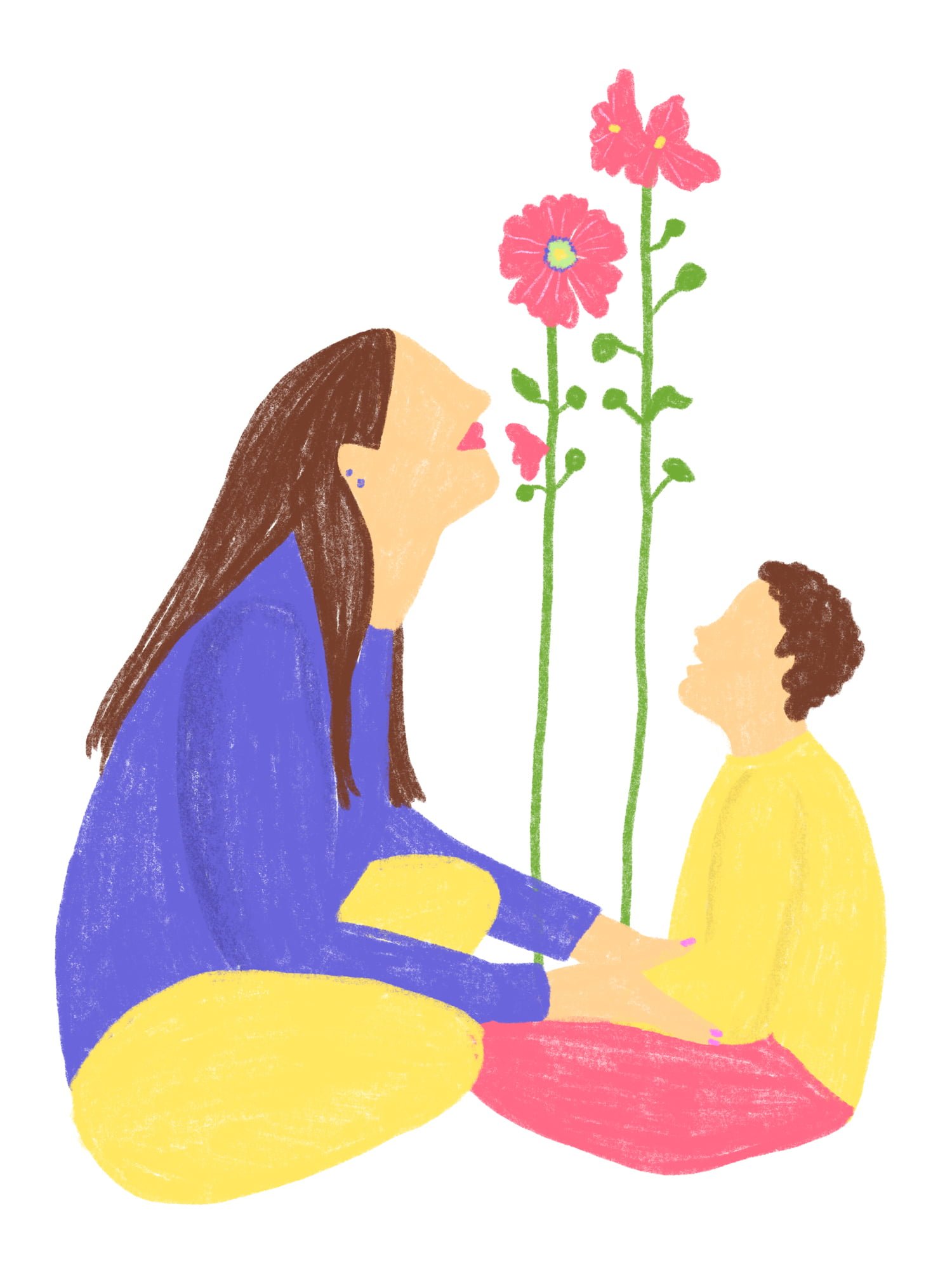
LOOK FORWARD (Your impact)
Below are some common examples of purposes behind guerrilla gardens. Please note: this is far from an exhaustive list. Your garden may also combine several aims (they usually do).
1. Boost diversity
1 in 6 species in the UK are at risk of extinction. In the USA, a staggering ⅓ of wildlife are at risk of extinction. Many guerrilla gardeners push back against mass extinction by restoring native greenery to grey areas – safeguarding plant diversity, rebuilding broken ecosystem links, and providing food and shelter for wildlife.
2. Grow food
No one should struggle to access nutritious food. Growing food in your neighborhood can reframe fresh produce as a social good – and a right – rather than a luxury, while avoiding “food miles”, packaging, and chemical use.
3. Create beauty
Beauty helps us feel pride in our area, which translates to a sense of dignity that everyone has a right to experience. Beautiful environments are also proven to be good for us: they lift people’s spirits, calm and comfort us, and leave us feeling happier and healthier.
Exercise
How will your garden make the world a better place, in its small way? Is it about tangible impact, or a change in people’s hearts and minds?
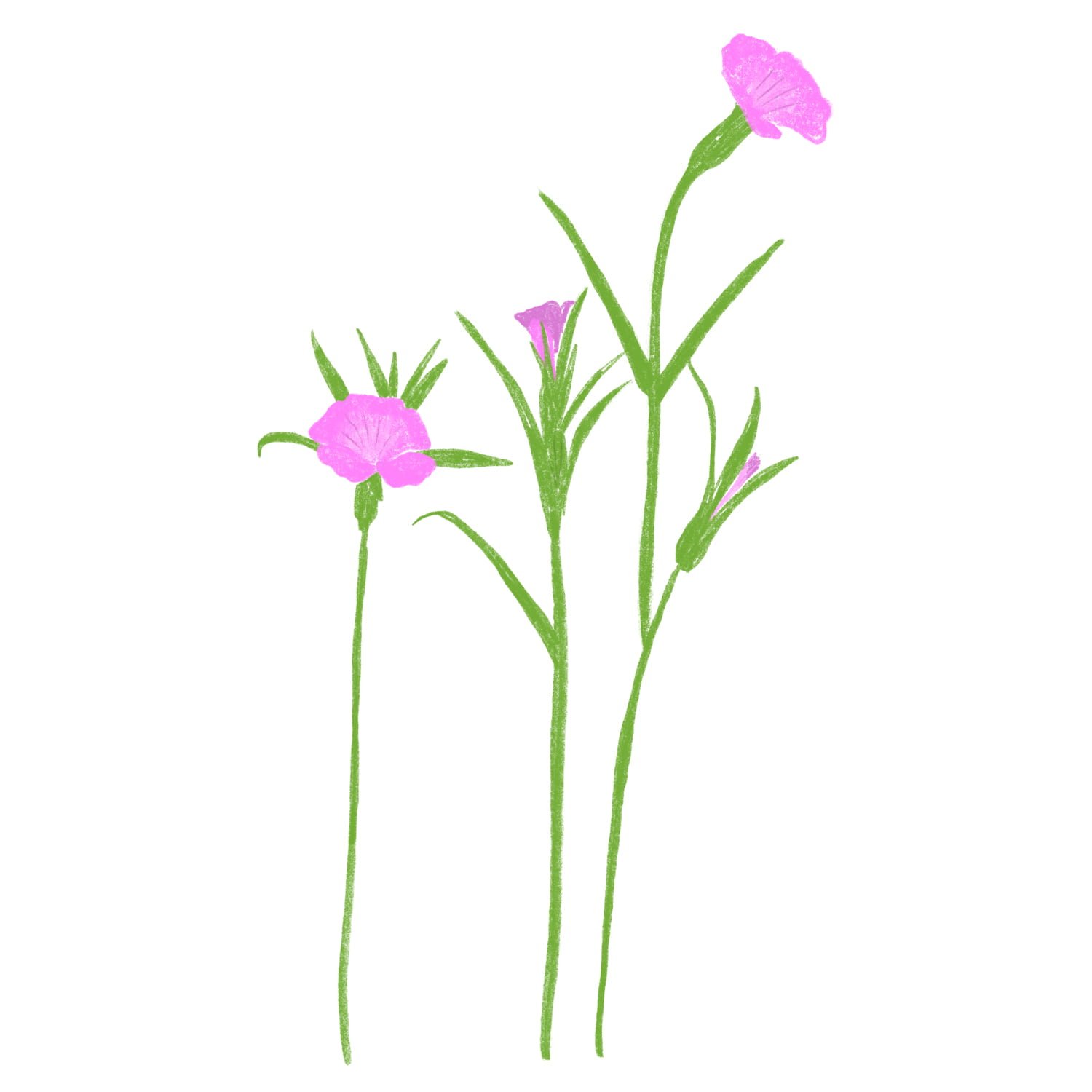
STEP 2
Find a place
The ideal guerrilla gardening spot should be two things: near and neglected.
Why?
Near: Choosing a spot near home makes it much easier to plan, plant, and care for your garden, and also means you’re not encroaching on another community’s neighborhood!
Neglected: By choosing a neglected area, you can inject nature where it’s most needed: urbanised, derelict, and nature-deprived places.
Here are a few examples of common sites you’ll find to grow on, big and small. (This lifeless line-up may sound bleak but, to a guerrilla gardener, these places are full of excitement and opportunity).
- Street tree beds
- Road verges
- Median strips
- Lawn edges
- Back alleys
- Vacant lots
- Brownfield land
- Abandoned public planters
Exercise
From your front door, set a timer for one minute, and head for a walk. Keep an eye out for lifeless corners you could transform and note them down (or take a photo). You can do this trip multiple times, in different directions, but always start from the front door, and only go a minute away!
STEP 3
Gather people
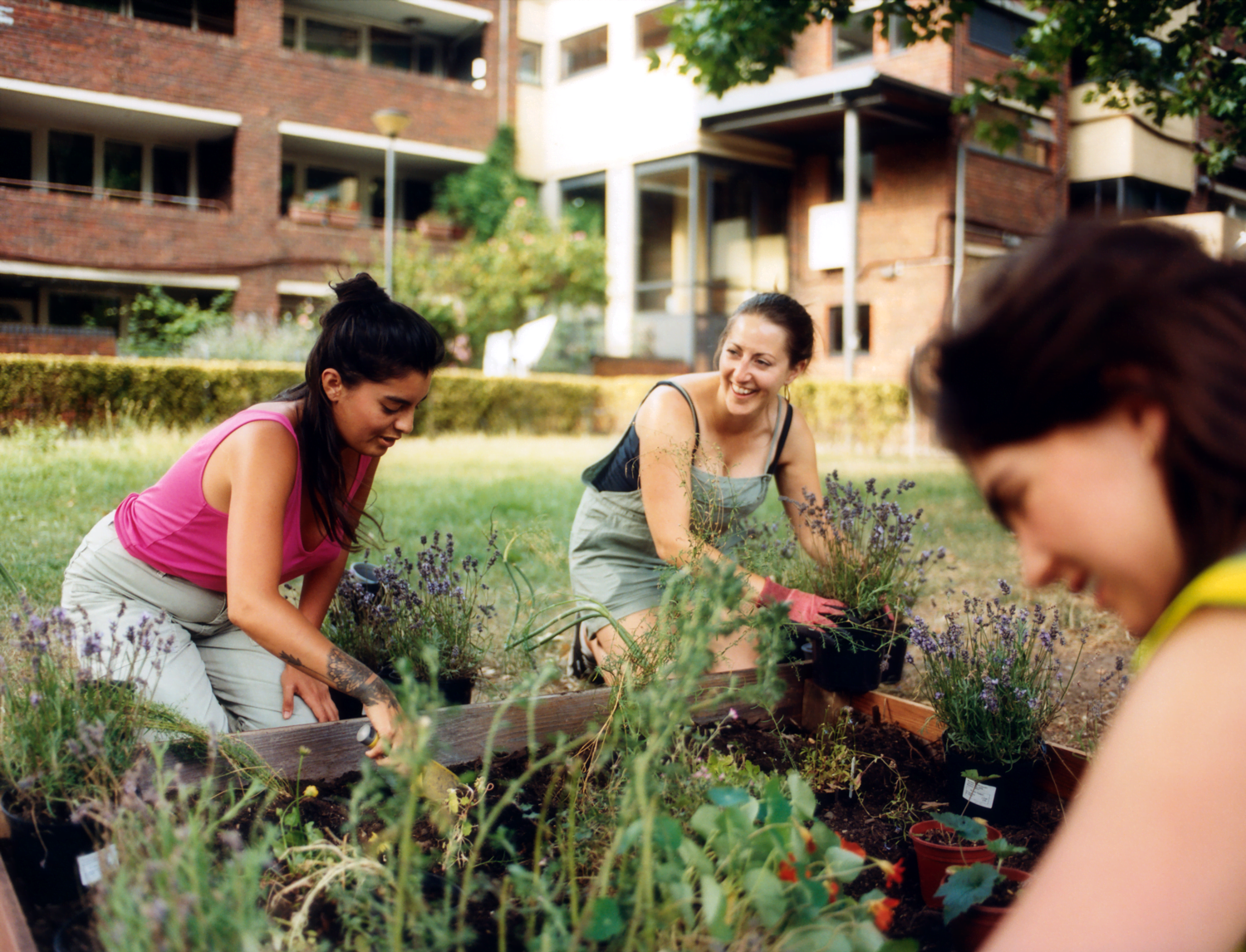
Guerrilla gardening isn’t only about growing plants, it’s also about growing a community.
Guerrilla gardening with friends and neighbours offers a camaraderie like no other. Not only that, but more people also means more knowledge, more ideas, more skills, and more manpower. People can help you at every stage of the process:

Because two heads are better than one

Because many hands make light work

Because there’s strength in numbers
Finding allies
Build bonds with neighbors through existing community groups (either online or in person) and generally getting chatting.
Top tip
If you’re shy, try printing leaflets to drop in letterboxes or stick to notice boards. They’re a simple way to give people who might be interested a clear idea of what you’re planning, and how they can get involved.
Communicate
you’ve got a few people together, set up a hub where you can share ideas and help each other. You may want to use this just to broadcast information out, or as a group chat. Check out Geneva, Meetup, Slack, Telegram, Trello, WhatsApp and Wickr Me, to see what’s best for you.
Organise
Though guerrilla gardening is often framed as “random acts of gardening”, its most effective operations are carefully considered, and you’ll need to have clear roles and goals to get things done.
You may want a leader (this could be you!), or opt for a totally flat hierarchy (this becomes less viable as group numbers increase). If you do have a small group of equal leaders, meet up before you take action to arrive at a mutual decision. For larger groups, you’ll need someone to drive things along and ensure everyone else is informed of the plan of action.
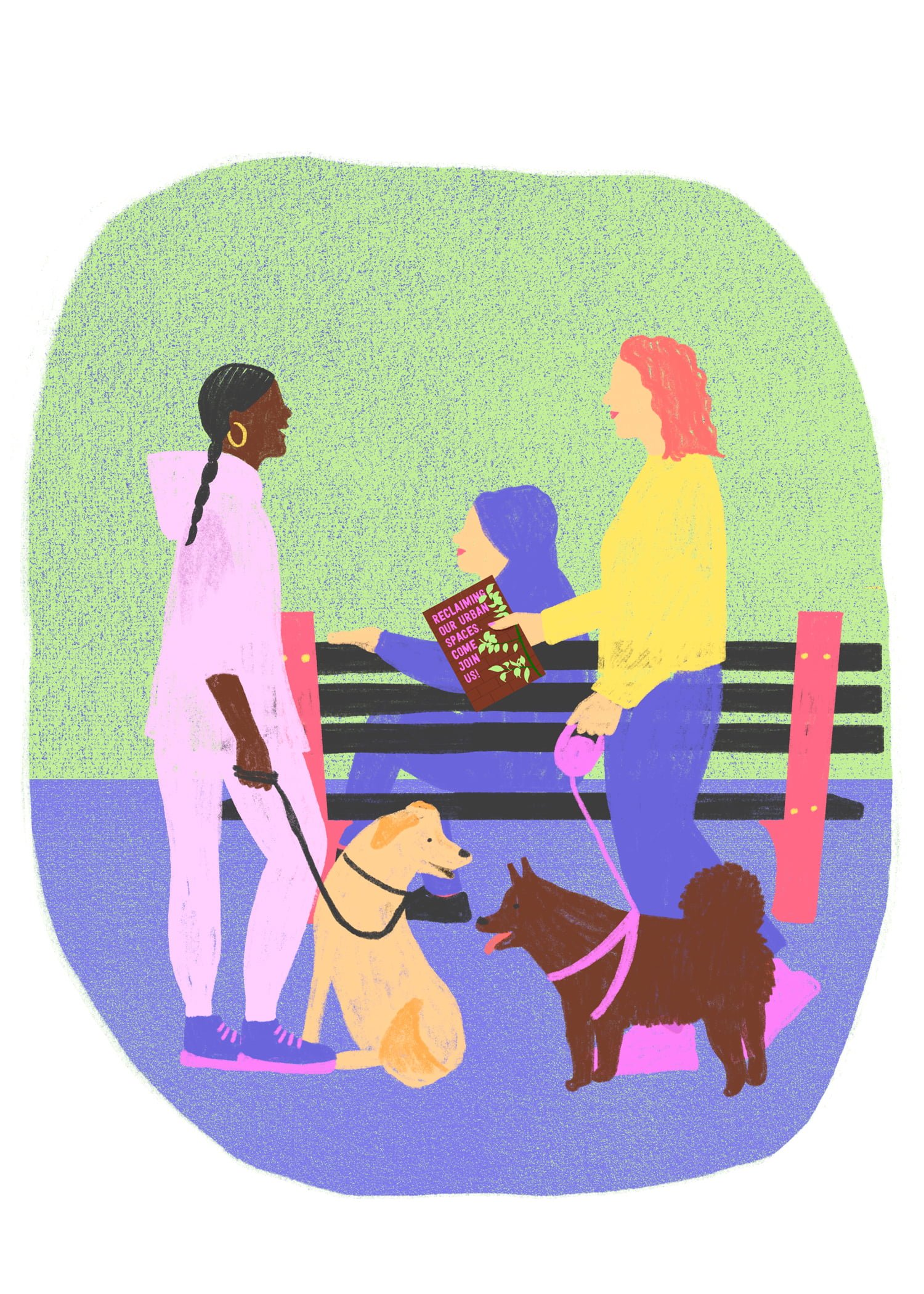
Exercise: Think about…
Commitment. What kind of commitment will you need from people? Is it a long or short-term plan?
Talents. What kind of expertise might you need in your group? Who’s best placed to lead in which area of activity?
Principles. Do you want to write a manifesto, or set up community guidelines?
Representation and access. What adjustments or accommodations might help people to join in?
Power and privilege. How can you ensure everyone is heard fairly?
(Fun)ctionality. How will you strike the right balance between getting things done and ensuring it’s still fun?
Step 4
Create a plan
This step is all about planning what your garden will have in it: from plants, to structures, to creative touches.
Get to know the site
Plants’ needs vary. Some like it hot, others dig the shade; some need acidic soil, others aren’t fussy… The better your understanding of the conditions at your chosen site, the better you’ll be able to work with them, and avoid dead plants and disappointment!
You’ll need to know…
- Light levels
- Seasonal climate
- Soil texture
- Soil acidity
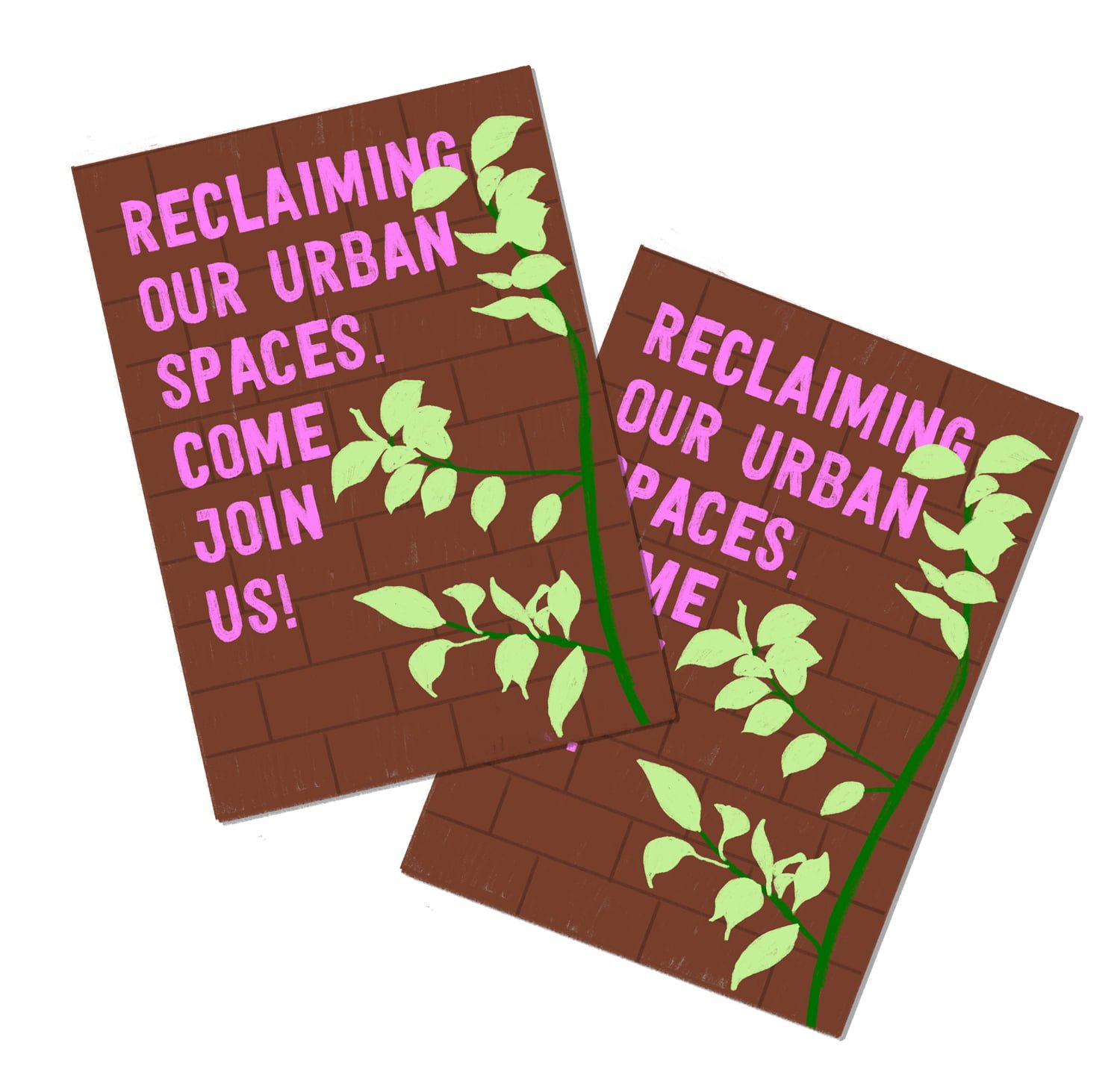
Exercise
Get a notebook and make a page for each of these features of your garden. Treat it like a detective case, and note down as much detail as you can. This will give you the answers you need in terms of what plants to choose.
Choose plants…
- To suit your conditions. After discovering your site’s various conditions, search for plants that can thrive in this unique set of overlapping circumstances.
- To fulfil your purpose. Choose plants that fulfil your aims – such as pollinator-friendly wildflowers, pollution absorbing shrubs, or nutrient-rich vegetables.
- For density and diversity. A dense, diverse planting scheme will offer the most beauty and ecological benefits.
STEP 5
Get the parts
Don’t get caught short in the middle of a dig! Make sure you know exactly what tools, materials, and other provisions you’ll need to create your guerrilla garden, and how you’ll get them.
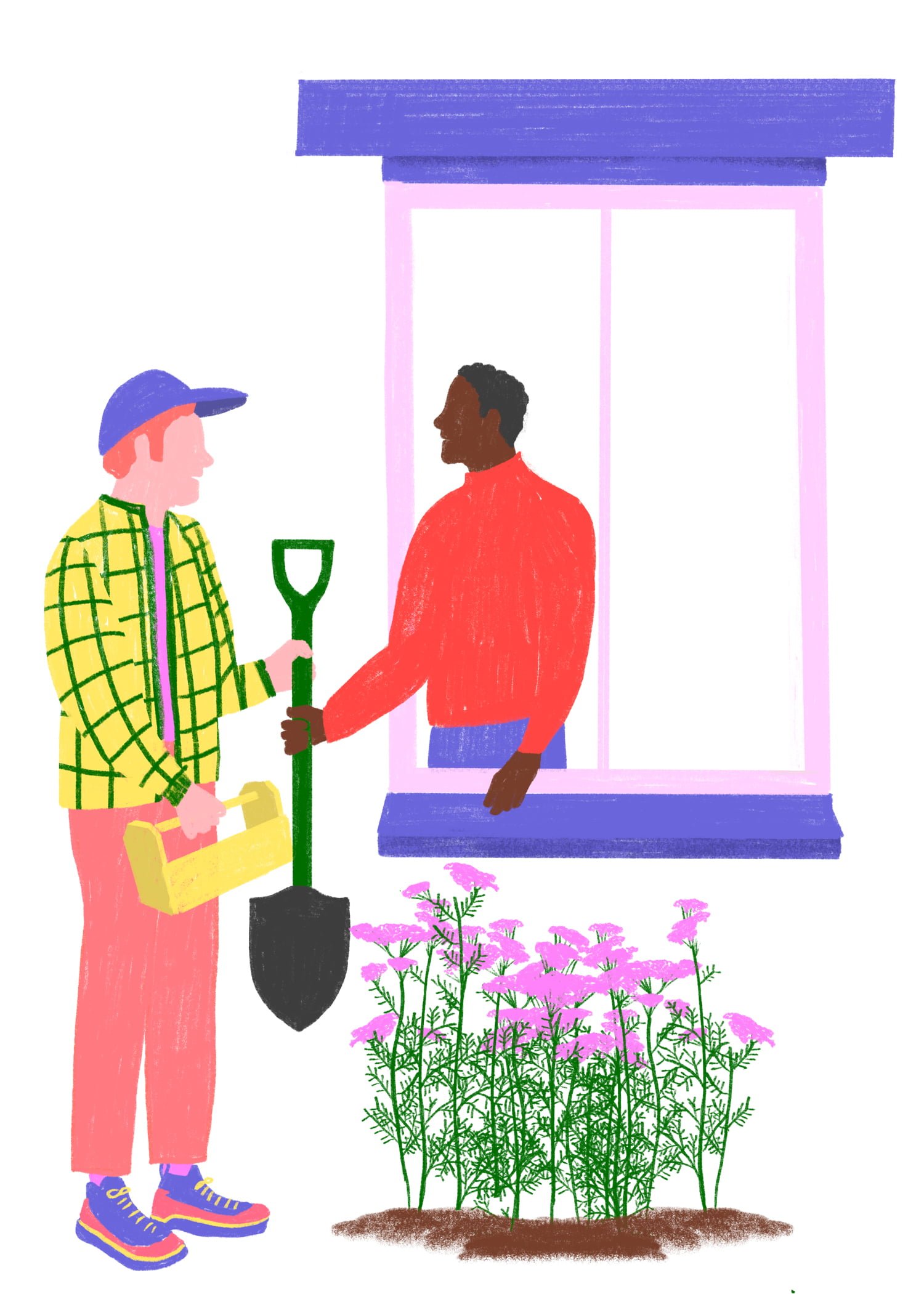
Here’s a starter list of things you might want or need:
Essentials
- Plants
- Gardening tools
- Gloves
- Compost (peat free!)
- Water
- Bin bags
Extras
- Snacks
- Speakers
- DIY tools
- First aid kit
- Leaflets
- Trolley or trailer
Sourcing sustainably and cheaply
Getting the materials you need shouldn’t cost the Earth. Luckily, you can go surprisingly far with borrowing, repurposing, and buying second hand. My top tips for finding things cheaply and sustainably:
- Borrow from friends and neighbors
- Reach out to local community gardens
- See if you there’s a “lending library” or “tool library” near you
- Look for community recycling projects
- Check construction skips
- Search digital marketplaces (like Freecycle, Geev, Facebook Marketplace, Craigslist or Gumtree)
- For free plants, propagate from cuttings or save seeds!
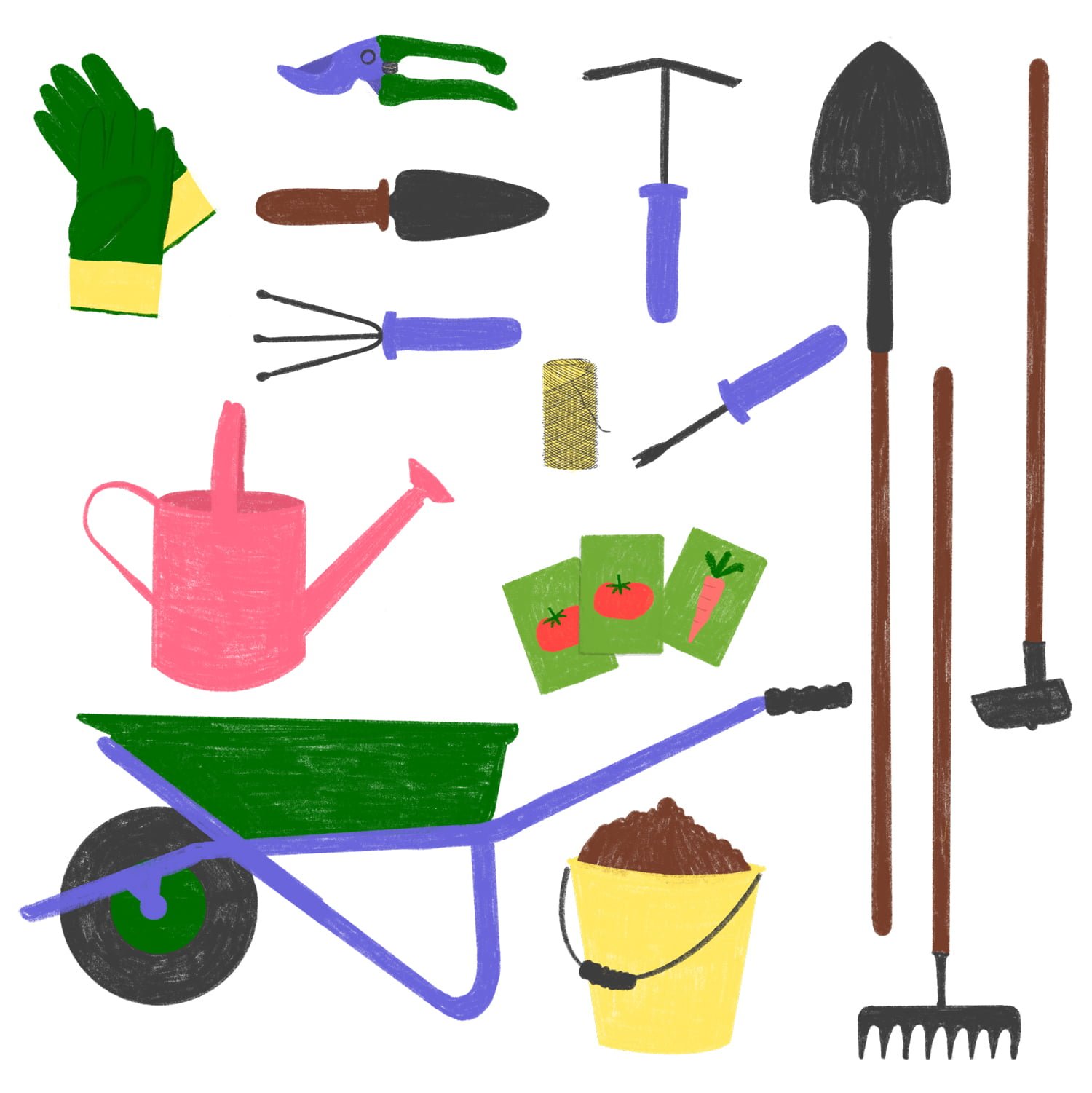
Repurposing ideas
Wooden cable drum → table
Bricks, rocks, or logs → bed borders
Railway sleepers → low planter edges
Tire → low plant pot
Bathtub → deep raised bed
Metal headboard → trellis
Industrial pallets → almost anything!
Exercise
Make a checklist of everything you’ll need to bring your garden plan to life, down to the last detail. Then work out how to get each one in the most sustainable, low-cost way.
STEP 6
Do the planting
Guerrilla advice (For new guerrillas)
Plan the day. Do you have everything and everyone you need? Check your kit list and make sure everyone knows when and where to meet, and roughly how long you’ll be working for (2 hours is a safe bet!).
Always wear gloves. There’s always a possibility of encountering needles, knives, and other things you don’t want to touch in rubbish heaps or bedraggled municipal planting.
Wear a hi-vis (or carry a clipboard). This one’s up to you, but they lend an air of authority (or invisibility) that can feel like armour if you’re nervous about gardening in public. I like to say, “We’re a local community group tasked with clearing up this patch.”
Wet street soil before working into it. Two reasons for this:
- If it’s dry, dusty particles of god-knows-what fly up at you.
- Wetting compacted soil makes it much easier to break apart or rake over (which in turn helps seeds and plants take hold).
STEP 7
Provide and protect
Congratulations, you’ve planted your guerrilla garden! So… that’s it – right? What if I told you that planting the garden isn’t the end of the mission? That in fact, it’s just the beginning…
All gardeners are really guardians: watering, mulching, pruning, and so on. Guerrilla gardeners’ role goes further, to encompass protection against outdated laws, herbicide-spraying units, NIMBY neighbours and “C.A.V.E. people” (Citizens Against Virtually Everything). So, being a long-term guerrilla gardener involves both Cultivation and Communication.
CULTIVATION
Fine tuning. Keep an eye on your garden as time goes on to see what jobs might need doing. Are there gaps that could be filled? Does the soil need nourishment? Can you see any signs of disease?
Seasonal savior. Knowing what to do, when, can feel like a lot when you’re new to gardening! Take it easy by looking up what to do in the present month (it’s easy to find calendars detailing year-round jobs) and enjoy the season’s rhythms.
Watering. Keeping your garden watered is one of the most vital regular tasks, especially when it’s just getting established. Here are some quick tips:
- Always water your garden in the morning or evening (to prevent it evaporating off)
- Water plants at the base – watering leaves can cause disease or scorch them if it’s sunny.
- Soak thoroughly to encourage deep, strong root growth. A weekly drench is better than a daily dribble.
COMMUNICATION
Campaigning. You may have to campaign to keep your garden alive. Los Angeles guerrilla gardener, Ron Finley, got local laws changed in his favour after “illegally” planting fresh fruit and vegetables in the parkway outside his home. Gather your community – both on- and offline – to build a strong case in support of your garden.
Conversations. As you work on your garden, passers-by will often stop to see what you’re up to. 99% of the time, they’ll be kind, curious folk who want to thank you, or offer help. However, it’s always best to be prepared for the worst. My advice is:
- Kill ‘em with kindness. Always treat people as though they have good intentions. Greet everyone with a smile, be welcoming, and don’t get defensive.
- Look the part. Having leaflets, matching t-shirts, a website, or social profile helps make things look “official”.
- Garden in broad daylight. Guerrilla gardening at night only invites more suspicion and implies that what you’re doing is delinquent.
Signs. Placing signs in your garden can signal intention and commitment, helping to educate people and deterring them from harming it. Signs can say:
- What to do, such as: “Please water me”, “Help yourself”, “Sign our petition”.
- What not to do, such as: “Don’t spray glyphosate here”, “Not a toilet”
- What’s going on. Signs can also act as propaganda. In letting people know how the garden came into being, we can help others – from community members to council staff – see guerrilla gardening’s potential and positive impact.
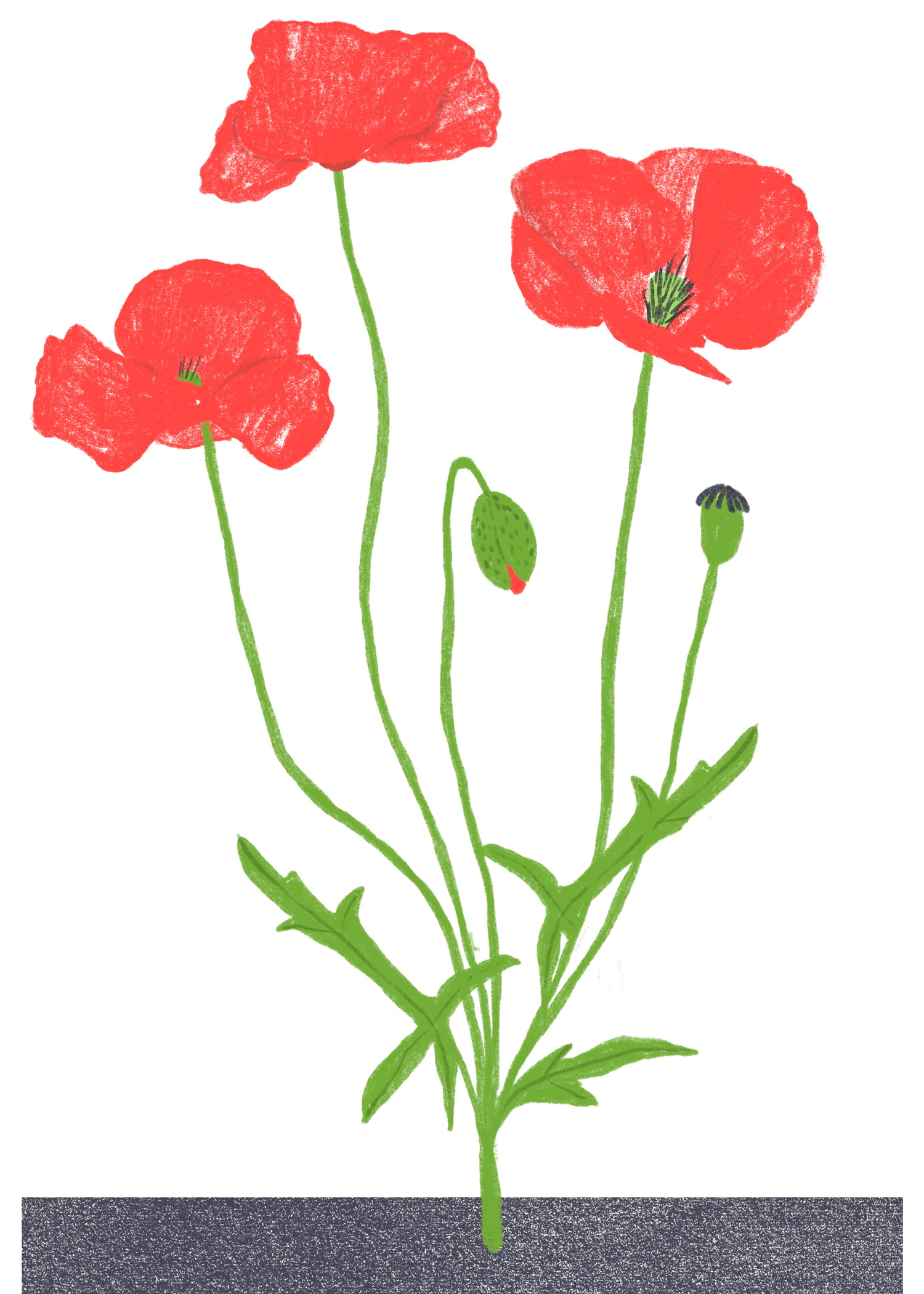
STEP 8
Expert advice
Finally, I’d like to leave you with three pieces of advice, echoed by some of my guerrilla gardening comrades:
1. Start small
Don’t bite off more than you can chew. Start small, and build up to bigger projects as your confidence, connections, and abilities grow.
“I didn’t start hosting events with 30 volunteers right away. I started by putting seeds on an empty street tree bed, unsure if anything would grow.”
Simone Marques, USA
2. Just do it
Don’t let fear of failure hold you back. You’ll never know how things will turn out until you get going. So, get going!
“Don’t worry about making mistakes – just figure it out as you go. It’s not rocket science, there’s a good chance things will work out!”
Alan Hurley, Ireland
3. Resist, persist
Guerrilla gardening takes grit. From combative authorities to the changing climate, we face challenges from all sides, and must stay resilient in the face of them. It’s our responsibility to be tenacious, and care for the gardens we create.
“Gardening, whether guerrilla or not, is about resilience.”
John Welsh, England
STEP 9
Over to you
Guerrilla gardening is not a silver bullet to the crises we find ourselves in, but it reminds us that we are not powerless.
In creating a guerrilla garden, you plant a seed of a happier, healthier, fairer future. Some of these seeds may fail; others will grow, pollinate, and spread out – who knows how far. Like determined wildflowers pushing up through paving, the movement will crop up wherever colour and life are lacking.
Ready to be on the right side of history? Get guerrilla gardening.
So, there you have it! Your seven-step plan for creating your very own guerrilla garden. How do you feel? Are you ready to grow?
If you’d like to delve deeper into any of these stages, backed by illustrated step-by-step how to’s, plant recommendations, and photo stories of real life transformations, pick up a copy of the ultimate handbook: Get Guerrilla Gardening: A Handbook for Planting in Public Places.
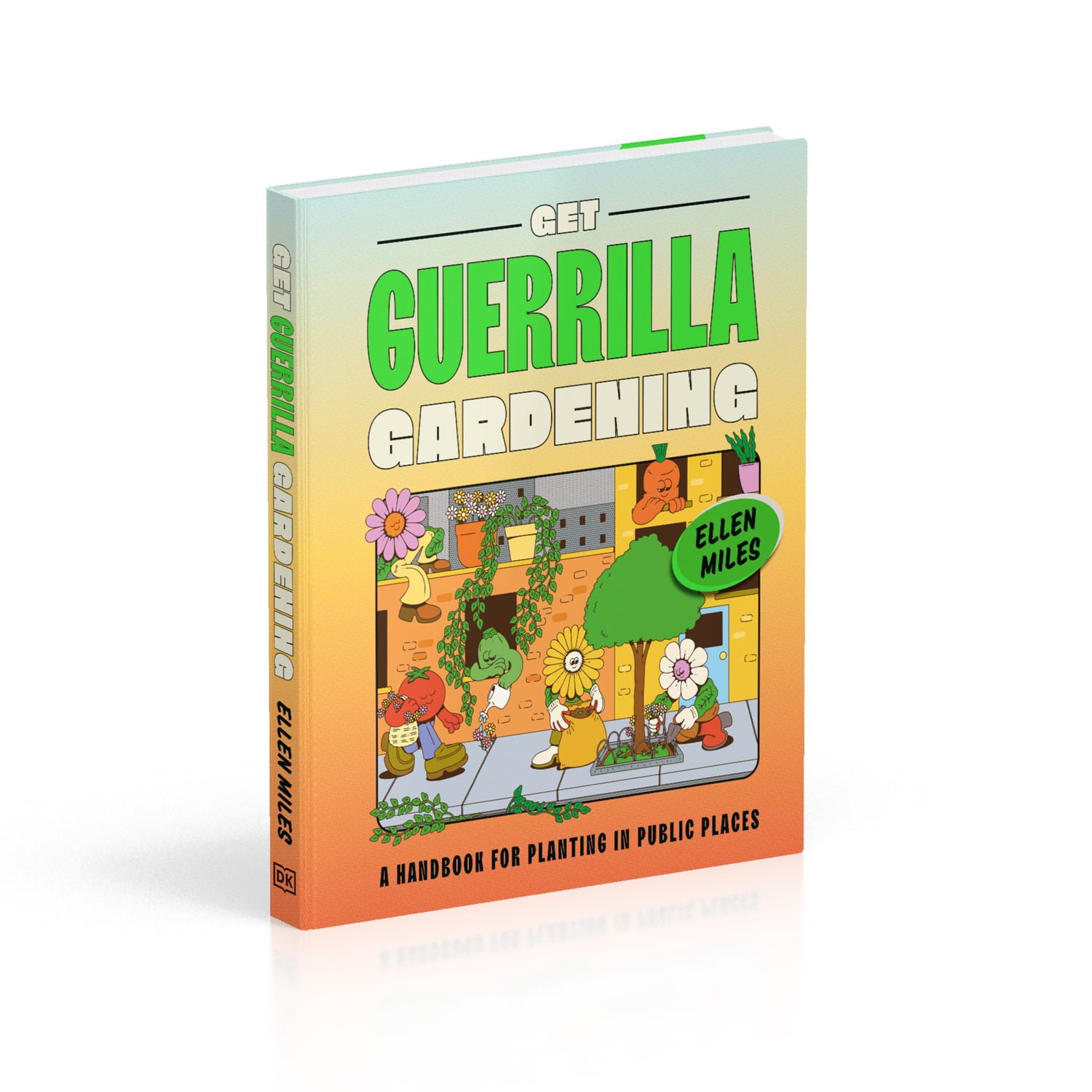
Resources
Get the manual
Get Guerrilla Gardening: A Handbook for Planting in Public Places
Get the right plants
To suit your conditions
rhs.org.uk/plants/search-form
or
gardenia.net/plant-finder
Native Plant Lists
US: can-plant.ca
Canada: rhs.org.uk/plants/search-form
UK: gardenia.net/native-plants/united-kingdom
ROI: en.wikipedia.org/wiki/Flora_of_Ireland
The Netherlands: https://www.gardenia.net/plants-by-region/europe/netherlands
Invasive Plant list
US: can-plant.ca
Canada: rhs.org.uk/plants/search-form
UK & ROI: en.wikipedia.org/wiki/Flora_of_Ireland
Hardiness Zones
US: can-plant.ca
UK: en.wikipedia.org/wiki/Flora_of_Ireland
Get free plants
US: can-plant.ca
UK: gardenia.net/native-plants/united-kingdom
Get free compost
US & UK: can-plant.ca
